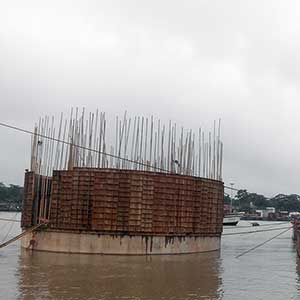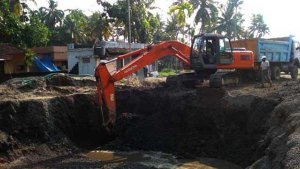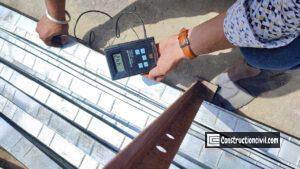Foundation is an essential structural element connected to the ground, and it receives the load from the piers and abutments and transmits through the layer of weak soil to a firm stratum at a significant depth. Depending upon the foundation depth and requirement of the project, different types of foundations are used in construction. The selection of foundation types is crucial in Geotechnical Engineering. In this article, we will discuss different types of deep foundation.
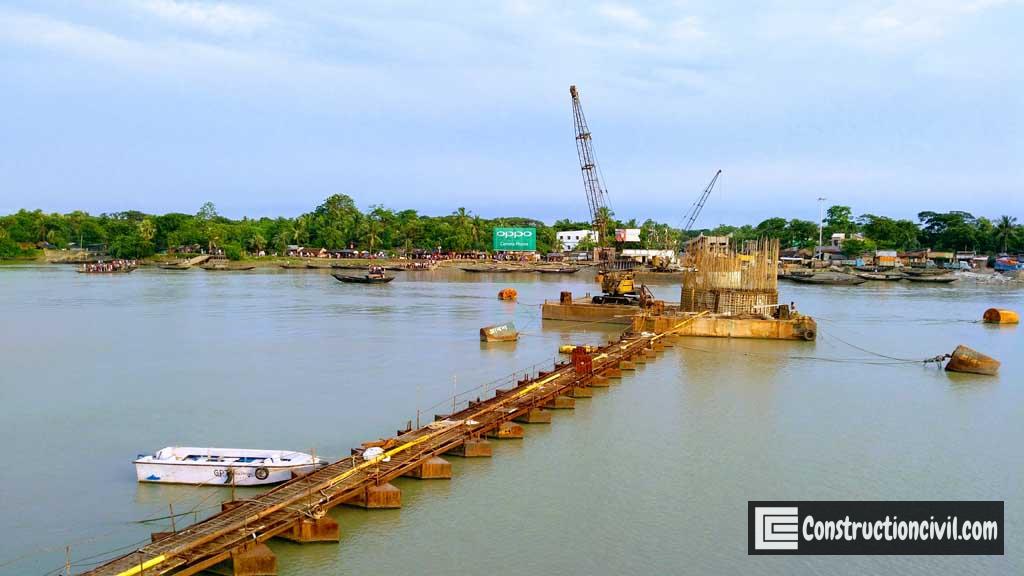
Also, Read: Construction of Footings – Important Guidelines
Selection of the Types of Deep Foundation :
Before selecting the foundation types, the following data should be available, which is very important.
- Anticipated Discharge and corresponding maximum scour level in bridges.
- Position of groundwater table, liquefaction depth and swelling potential.
- Availability of suitable bearing strata under anticipated loads.
- Settlements of foundation strata under anticipated vertical loads.
- Availability of adequate uplift capacity, if any, under anticipated loads.
- Foundation type in the existing structure in the vicinity, if any.
Foundations Types:
The foundation of structures is divided into two categories which are grouped as under
- Shallow Foundation( Depth < = Width ): Spread footing and raft foundations
- Deep Foundation( Depth > Width ): Pile foundation and Well foundation
Deep Foundation:
Types of foundation which transfer structural loads to the foundation soil strata farther down from the surface than a shallow type foundation does to a subsurface layer or a range of depths known as a deep foundation.
In the case of weak soil near the original ground surface, the bearing capacity is significantly less, and the foundation needed in such a case is the deep foundation.
Types of Deep Foundation:
Following types of deep foundations are commonly observed in different projects.
- Pile Foundation
- Well Foundation
- Basement Foundation
- Buoyancy rafts
- Shaft foundations
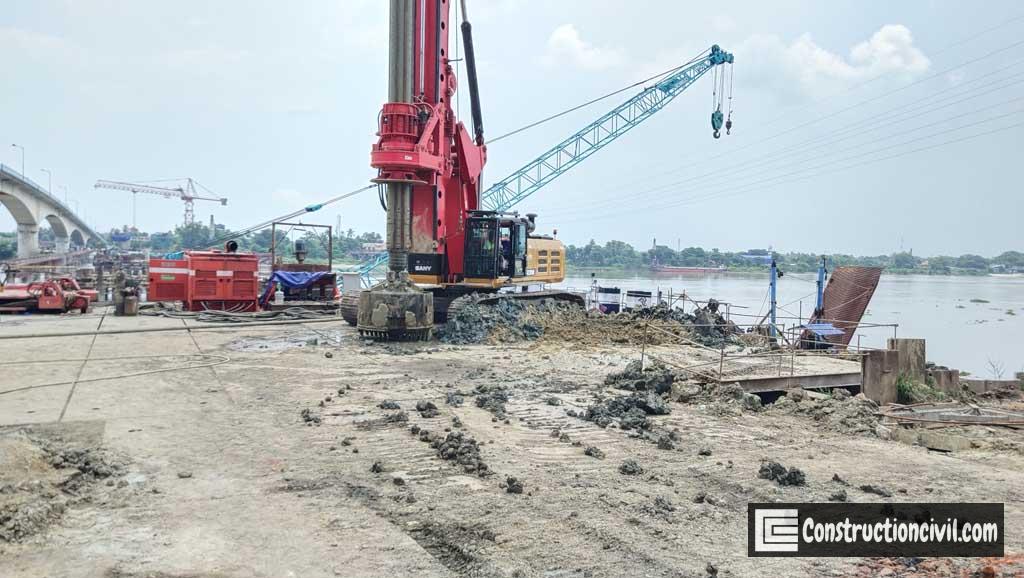
Types of Deep Foundation : Pile Foundation
Piles act like columns which can be precast or cast-in-situ by nature. Piles support the structure by the skin friction between the pile surface and the surrounding soil and end bearing force if such resistance is available to provide the bearing force. Accordingly, they are designated as frictional and end-bearing piles. They are usually provided in a group with a pile cap at the top through which loads of the superstructure are distributed to the piles.
Also, Read: Construction of pile foundation by Rotary Method
Type of Pile Foundations:
From the design point of view, depending on their load-bearing capacity or anchoring arrangement types of pile, foundations are as follows.
- End Bearing Piles: When the pile supports the total design load by only end bearing are called the end bearing piles.
- Friction Piles: Friction Piles support the structure by the skin friction between the pile surface and the surrounding soil
- Anchored Piles: Anchor piles transfer compressive and tensile forces to the ground.
Pile foundations are also categorized based on the material used.
- Concrete Piles:
- RCC bored cast-in-situ: For soil, completely disintegrated and highly weathered rock
- RCC Bored and Rock Socketed cast-in-situ: For rock, other than entirely disintegrated and highly weathered rock
- RCC Precast driven piles
- Steel Piles
- Wooden/Timber Piles
- Composite Piles
According to their construction methods, there are three types of pile foundations:
- Driven piles
- Cast-in-situ piles
- Driven and cast-in-situ piles.

Also, Read: Bentonite Uses in Piling – Bentonite Slurry Preparation and Recycling
The shape, Size and Depth of Pile:
- Shape of Pile:
- The shape of the pile is generally circular type.
- Size of Pile:
- As per IRC: 78: 2014, The size of piles varies from 1.00m to 1.20 m in diameter.
- In modern construction, there are larger piles with more than 3000mm in diameter.
- Depth of Pile :
- Based on the sub-surface profile, structural load requirement, scour level etc., fulfilling minimum depth beyond “Depth of Fixity” calculated in accordance with IS: 2911 (Part-I/Sec-II): 2010 & IRC: 78: 2014.
- For socket length in rock, obtained in accordance with IS: 14593 and IRC: 78: 2014
- Spacing of Pile :
- Spacing of pile should be as per IS: 2911 (Part-I/Sec-II): 2010, IS: 14593: 1998 and IRC: 78: 2014.
- For frictional pile in the soil: Spacing should be minimum of 3.00 times pile diameter.
- For end-bearing pile in the soil: Spacing should be a minimum of 2.50 times of pile diameter.
- For rock socketed pile: Spacing should be a minimum of 2.00 times of pile diameter
Also, Read: 4 Important Bentonite Test for Piling – Equipment & Procedure
Design Consideration and Checks:
- Vertical/axial compression, uplift and lateral load should be checked properly.
- Check against shear failure and total and differential permissible settlement.
- For foundation in soil, completely disintegrated and highly weathered rock (Ref: IS: 2911 (Part-I/Sec-II): 2010, IS: 8009 (Part II), IRC: 78: 2014)
- For foundation in rock other than completely disintegrated and highly weathered rock (Ref: IS: 14593: 1998)
- Negative friction or down-drag (Ref: IRC: 78: 2014)

Also, Read: Construction of Pile Foundation by Direct Mud Circulation Method – DMC Pile
Types of Deep Foundation : Well Foundation
Well foundation is a types of deep foundation; that provides a solid and massive foundation for heavy loads as against a cluster of piles which are slender and weak individually. Wells are hollow and have a large moment of inertia with the minimum cross-sectional area. They can resist large horizontal and vertical loads even when the unsupported length is high on a scouring river. Well foundations have been used for hundreds of years as deep foundations for important bridges, buildings and other structures.
The shape, Size and Depth of the well:
- Shape of Well Foundation: Wells have different shapes, and accordingly, they are named as
- Circular well
- Double-D well
- Twin Circular well
- Double octagonal well
- Square / Rectangular well
- Size and depth of the well:
- Dredge-hole: Minimum 3.00 m diameter of dredge-hole as per IRC: 78: 2014
- Depth of Well: The depth of well foundation varies based on the sub-surface profile, structural load requirement, scour level etc.
- Grip Length in Soil: Minimum grip length should be 1/3rd of maximum scour depth below design scour level.
- Grip Length in Rock: It should be evenly seated all around the periphery on the Sound rock (i.e. devoid of fissures, cavities, weathered zone, likely extent of erosion etc.).
- Sump Depth: It is required to provide a “Sump (Shear Key)” of a minimum of 300 mm in hard rock and 600 mm in the soft rock inside the well by chiselling/blasting.
- The diameter of “Sump” maybe 1.5 to 2.0 m less than the inner dredge-hole subject to a minimum size of 1.5 m and 1.5 m anchored in rock with 25 mm dia HYSD dowel bars through a 65 mm dia grouted borehole.
- Safe allowable load-bearing capacity: similar to shallow (open) foundation only from end bearing and no skin friction
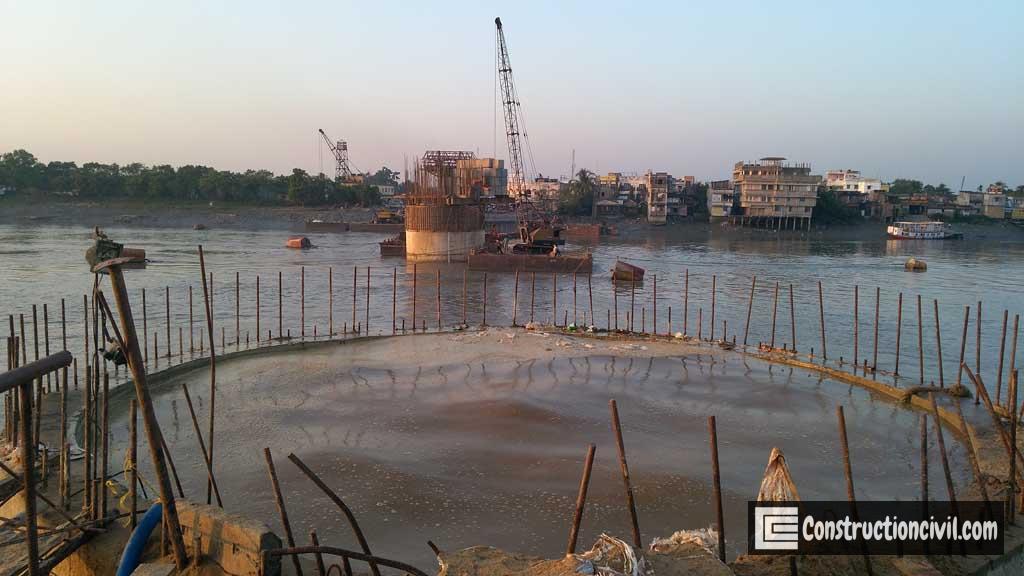
Design Consideration and Checks:
- Borehole Location plan with Borehole top Coordinates and Level should be checked before construction.
- Borehole/Drillhole log Profile with Top RL, Depth and Description of Foundation Layers with SPT N-value should be available during well sinking, and the nature of the soil during sinking can be inspected and tested, if necessary, at any desired stage of construction.
- All the above should be included in GAD and Detail Drawings of Pier and Abutment Foundation.
- Detailed Geotechnical Investigation data and its Engineering Assessment with design calculation, including foundation design recommendation, should be studied carefully before the start of construction.

Also, Read: Culvert – Types of Culvert – Box Culvert Construction Method
Types of Deep Foundation : Basement Foundation
The basement foundation is a structure that secures a house or other building about a floor below ground level. Besides basement foundations, nearly all types of foundations are embedded into the ground to a certain extent. However, a specific thing about a basement foundation is that it allows the creation of a “finished” basement that can serve as a standard room or multipurpose space beneath the rest of the structure.
Types of Deep Foundation : Buoyancy rafts
The buoyancy raft foundation is a type of foundation in which the design considers the principle of buoyancy effects. Therefore, the foundation’s total and differential settlements are reduced by lowering the resulting net weight on the soil.
Buoyancy is produced by constructing a hollow foundation structure having a certain depth after excavating the soil such that the weight of the excavated soil is equal to or slightly less than the combined weight of the substructure and superstructure. Buoyancy raft foundations are also known as compensated foundations.
Types of Deep Foundation : Shaft foundations
Shaft foundations, also known as the drilled pier, and it is an adaptable foundation system that is used broadly on a worldwide basis. A drilled shaft foundation is constructed in its most uncomplicated form by making a cylindrical excavation, placing a reinforcement cage, and then concreting the borehole. Shaft diameters can be up to 6.0 m, and depths exceeding 76.0m are possible when drilling and other supporting arrangements are available at the site.
